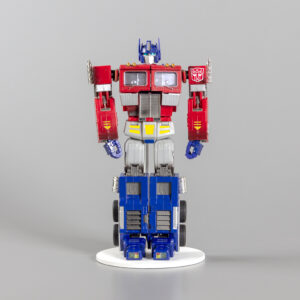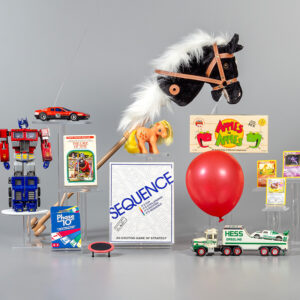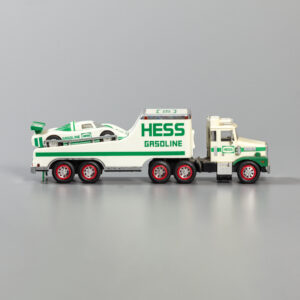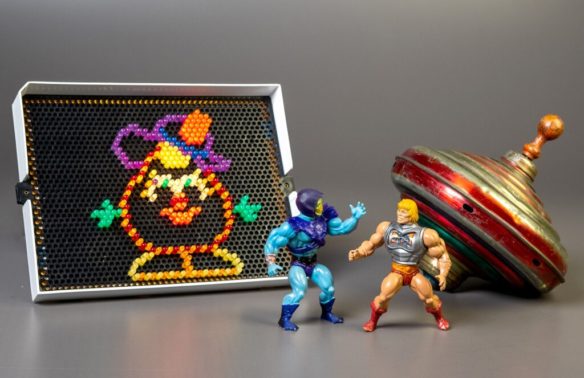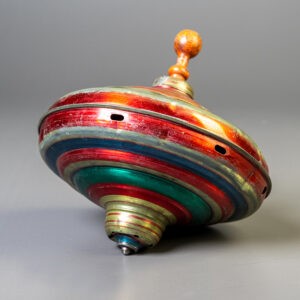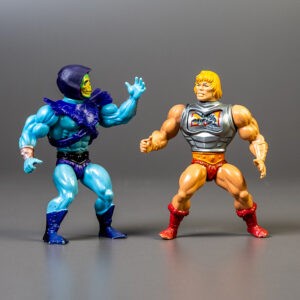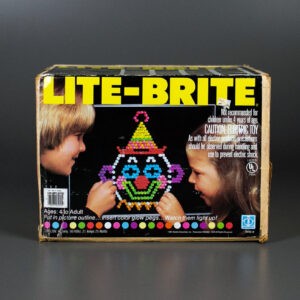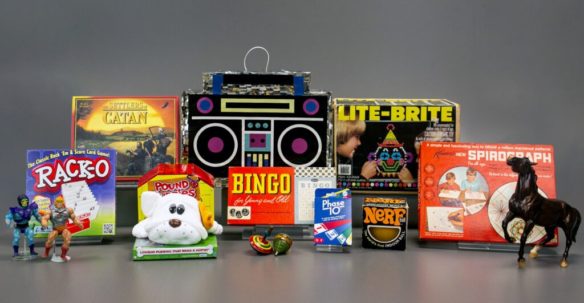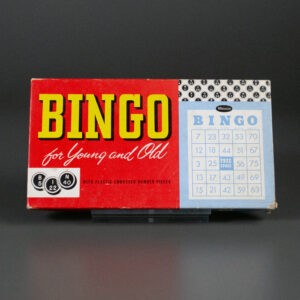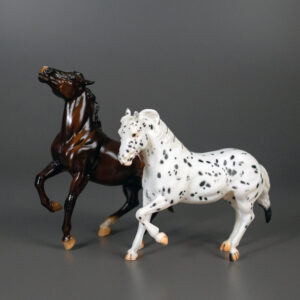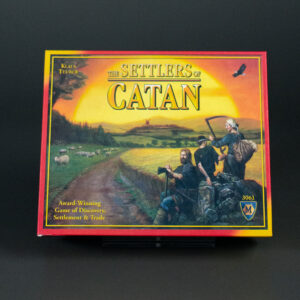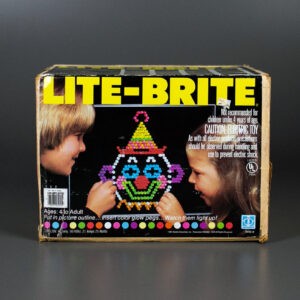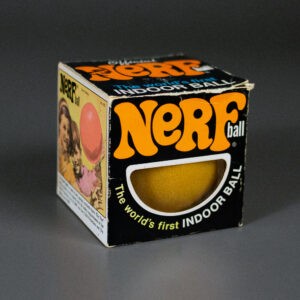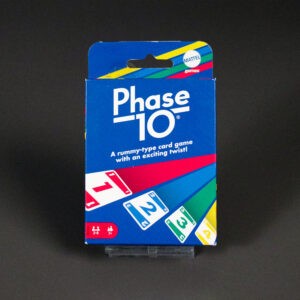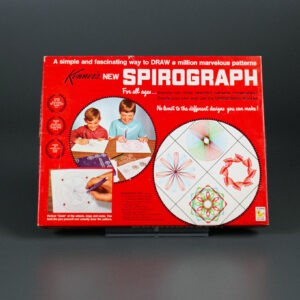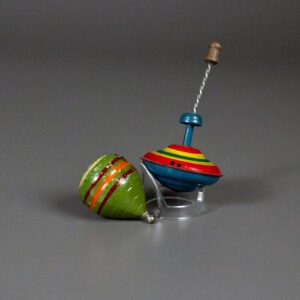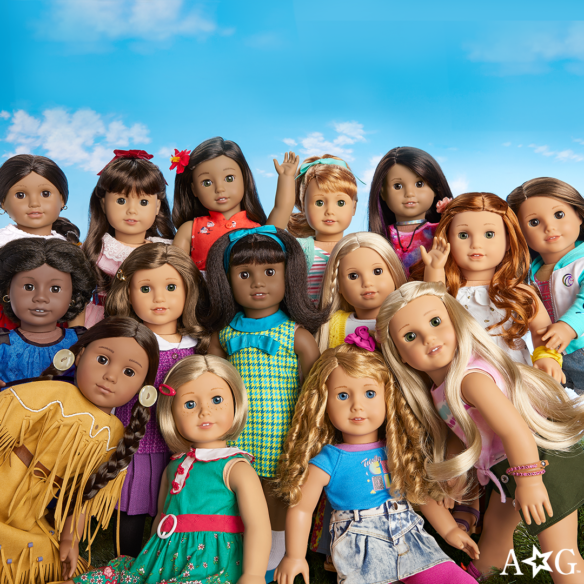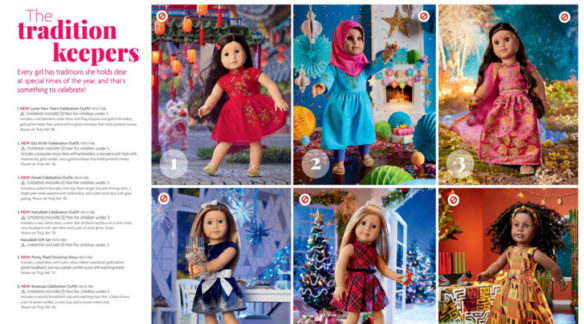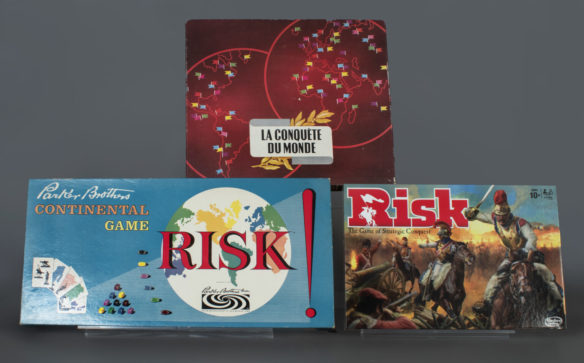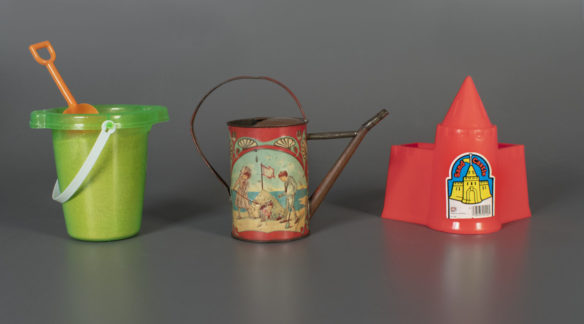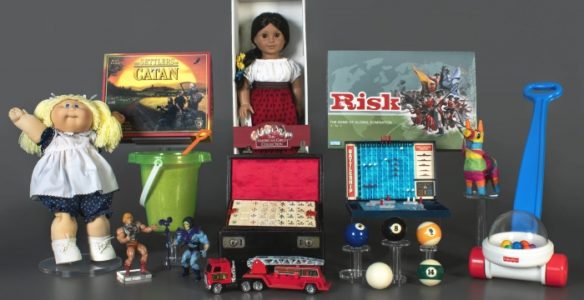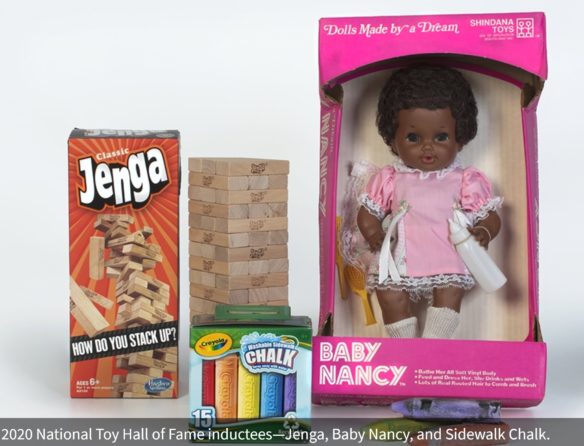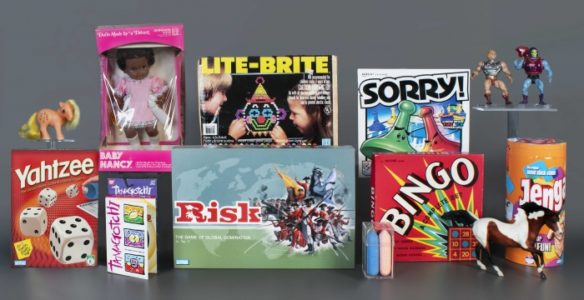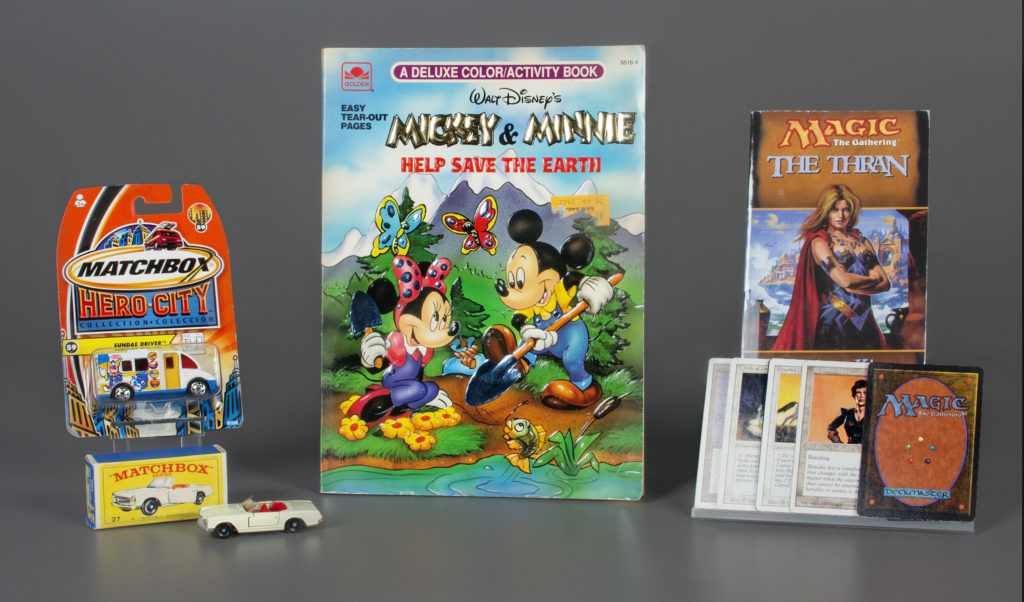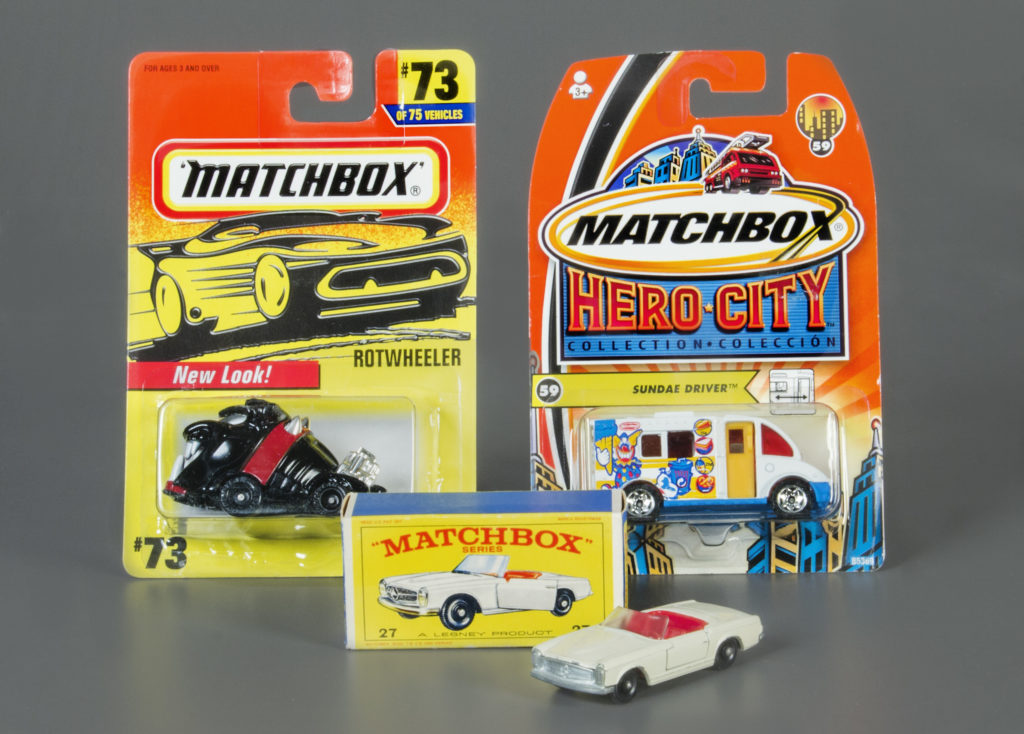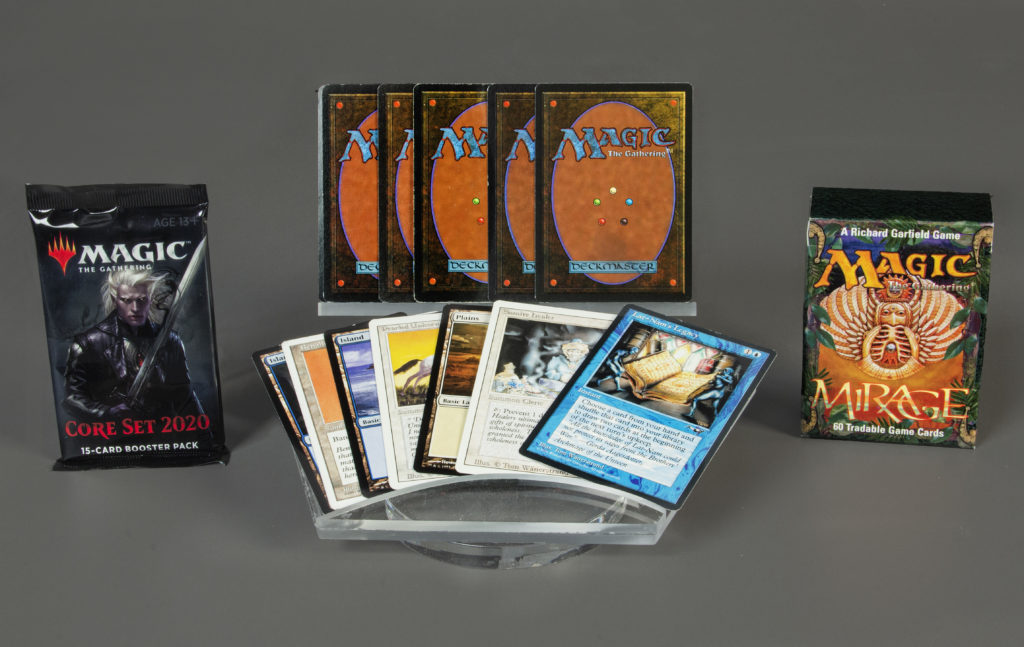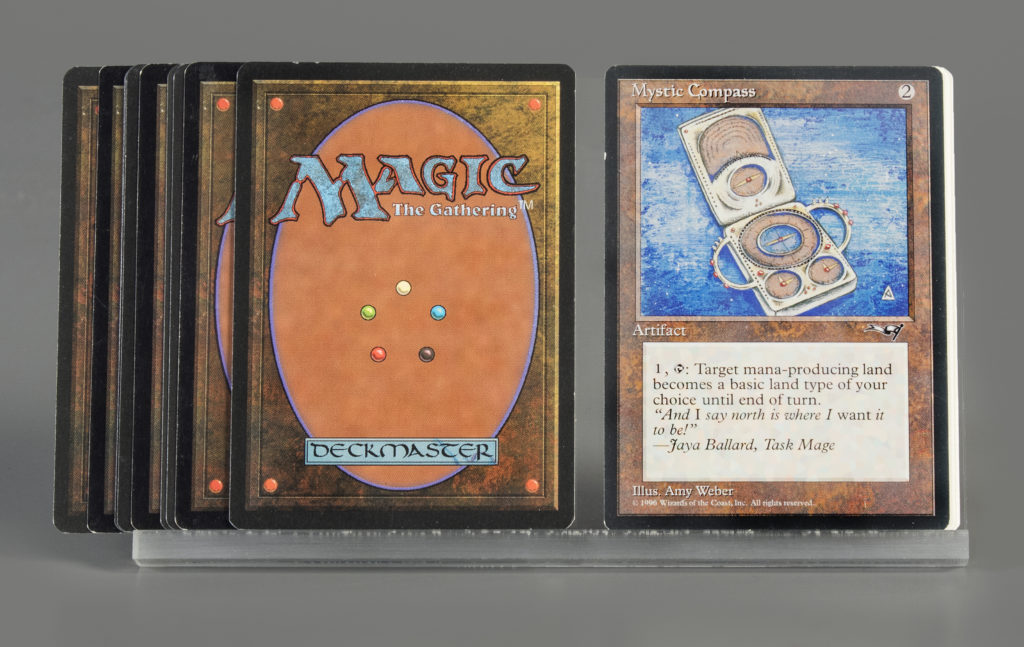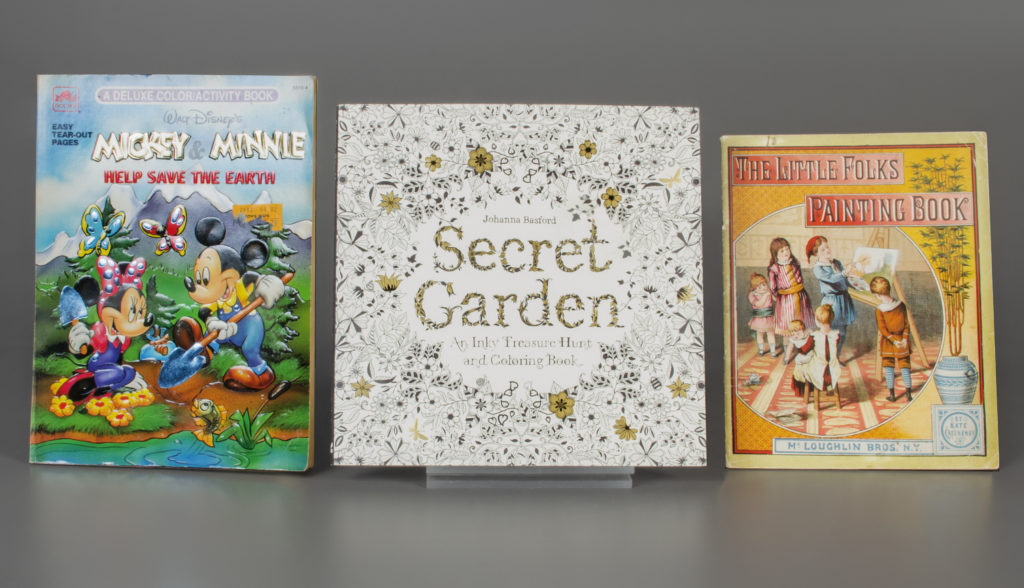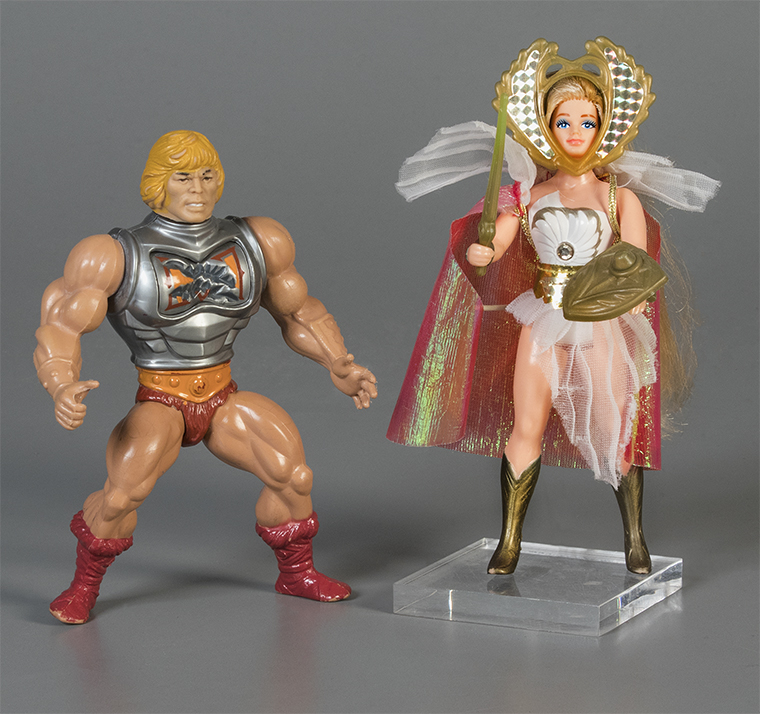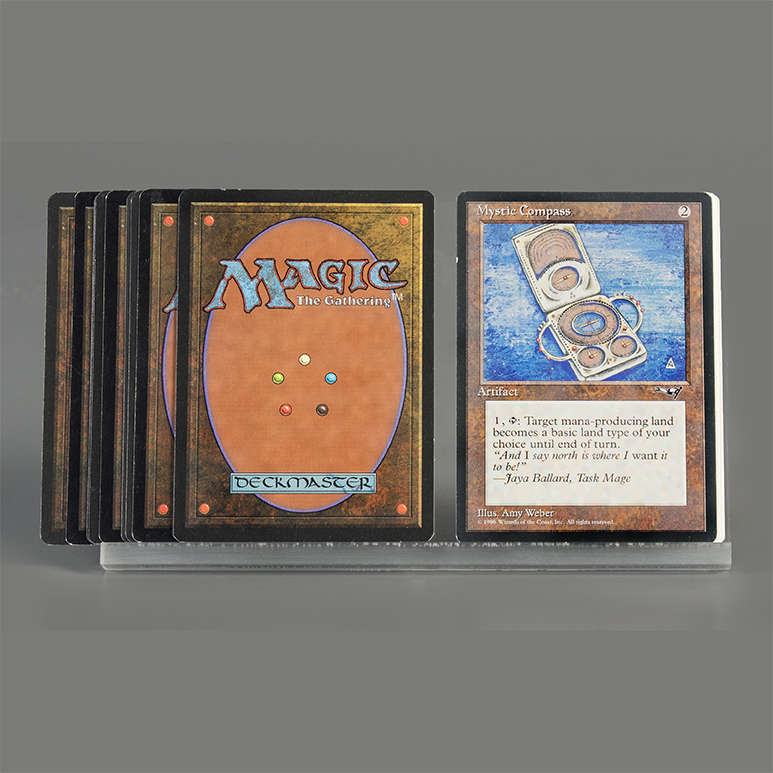Which toys will make it into the National Toy Hall of Fame this November? Can My Little Pony outrun the stick horse? Will Hess Toy Trucks cross the finish line before remote-controlled vehicles? Can Phase 10 play a better hand than Sequence?
The Strong’s National Toy Hall of Fame in Rochester, New York, today announced the 12 finalists for induction into the hall: Apples to Apples, balloons, Choose Your Own Adventure gamebooks, Hess Toy Trucks, My Little Pony, Phase 10, Pokémon Trading Card Game, remote-controlled (R/C) vehicles, Sequence, stick horse, trampoline, and Transformers.
The National Toy Hall of Fame receives thousands of nominations annually, and fans may vote for their favorite finalists from September 18 to 25 as part of a “Player’s Choice” ballot at toyhalloffame.org. The three toys that receive the most public votes will be submitted and will join the other top-three submissions by members of the National Selection Advisory Committee. (The public will collectively act as one member of the 23-member committee.) The final 2024 toy inductees, chosen based on the ballots, will be announced by The Strong National Museum of Play in November.
To date, 84 toys have been inducted into the National Toy Hall of Fame. The Strong’s National Toy Hall of Fame recognizes toys that have engaged and delighted multiple generations. Criteria for induction include: Icon-status (the toy is widely recognized, respected, and remembered); Longevity (the toy is more than a passing fad and has enjoyed popularity over multiple generations); Discovery (the toy fosters learning, creativity, or discovery through play); and Innovation (the toy profoundly changed play or toy design).
Here’s more information about this year’s finalists:
Apples to Apples
From its debut in 1999, Apples to Apples was a commercial success and reshaped the field of party games. By encouraging a group to offer creative or provocative answers to the questions posed by the player acting as judge, Apples to Apples prompts a lively and humor-filled interchange that can supercharge any gathering of friends and family. The game’s popularity has persisted for a quarter century, and it has influenced other games that now compete with it in the marketplace.
Balloons
From a single balloon on a string to glittering foil balloon arrangements to intricate balloon sculptures of clouds, play with balloons is something everyone can enjoy. Blowing up a balloon improves lung capacity. Tying a ribbon to the end of a balloon bouquet develops fine motor skills. Kneading a balloon filled with flour promotes sensory play and relieves stress. And there’s nothing like a water balloon to make a good prank. Balloons stem from and encourage creativity, experimentation, and innovation.
Choose Your Own Adventure Gamebooks
With their roots in oral storytelling that asked listeners for their input, and the branching stories and role-playing simulations of the mid-20th century, Choose Your Own Adventure gamebooks gave kids new opportunities to play with reading. By empowering readers to choose what paths their stories took, it influenced a generation of future game designers, sold more than 270 million copies, and became one of the bestselling children’s book series of all time.
Hess Toy Trucks
Since 1964, the Hess toy trucks have signaled the beginning of the holiday season. For many, the trucks (and their iconic TV jingle) evoke memories of times past and the fun of playing with complex, battery-powered toys. Over the past 60 years, Hess trucks have appealed to kids with the realistic play they engender and to collectors (both adults and kids) who find pleasure in hunting for and acquiring these scarce and coveted reminders of childhood and holiday happiness. As the jingle says, “The Hess Truck’s back and it’s better than ever”
My Little Pony
Introduced in the 1980s and reintroduced in 2003, the My Little Pony line of mini-horses encourages children in traditional forms of doll play—fantasy, storytelling, hair grooming, and collecting. The small pastel ponies have come in more than 1,000 varieties, all with elongated tails and manes made to be brushed. The toys peaked in popularity between 1982 and 1993—even outselling Barbie for several years.
Phase 10
In 1982, Black game inventor and entrepreneur Ken Johnson introduced Phase 10. The rummy-style card game challenged players to collect various groups of cards to complete 10 phases, in sequential order, before their opponents. The game took off, spawning sequels, variations, and a popular mobile app game. Today, it is one of the bestselling card games in the world, second only to National Toy Hall of Fame inductee Uno.
Pokémon Trading Card Game
Pokémon Trading Card Game has impacted trading card games throughout the world, with more than 64 billion cards produced since it debuted in 1996. The game’s mechanics are straightforward and can be grasped within a single game. Supported by a dedicated community of anime enthusiasts, manga readers, and video game players, the Pokémon TCG is renowned for its accessibility, making it an attractive option for players of diverse ages and backgrounds.
Remote-Controlled (R/C) Vehicles
Radio-controlled vehicles—self-powered model cars manipulated from a distance by a special transmitter—offer kids the exhilaration of speed and control in miniature form. The thrill of R/C vehicles for kids is in manipulating the model to go as fast as possible without crashing and to wait to the very last nanosecond to turn left or right to avoid certain calamity.
Sequence
Sequence uses the familiar elements of a standard 52-card deck of playing cards in concert with a board on which players seek to occupy five-chip rows, columns, or diagonals before their competition. The game is easy to learn and one in which kids and grownups can compete on an even playing field. There’s enough luck (the cards in your hand) and enough strategy (where on the board to try to assemble a sequence) that gameplay stays interesting and speedy.
Stick Horse (Hobbyhorse)
In its simplest form, a stick horse, sometimes referred to as a hobbyhorse, is a pretend horse head mounted to a straight stick. Play with a stick horse inspires creativity and imagination. Whether a child has a simple stick horse or one with an elaborate halter and shiny mane, they can gallop off into the sunset.
Trampoline
On March 6, 1945, George Nissen received a patent for his innovative “Tumbling Device,” which he later trademarked “trampoline” based on the Spanish word for diving board. In recent years, trampoline parks and backyard setups have become increasingly popular among people of all ages. Jumping on a trampoline gives kids a chance to release energy and to enjoy that split, playful second of being suspended midair.
Transformers
Hasbro, Inc. first offered Transformers, a toy line of action figures that change their shapes, in the mid-1980s. Marketed with an elaborate backstory supported by a Marvel comic book series, a cartoon television series, animated movies, electronic games, consumer goods, and even its own cereal, Transformers have remained popular ever since. Their popularity has been fueled by additional movies, television shows, and comic books. For more than 40 years now, the appeal of Transformers is, in part, that the toys do what kids do anyway—change the toy to suit the needs of play.
[Based on a press release.]



